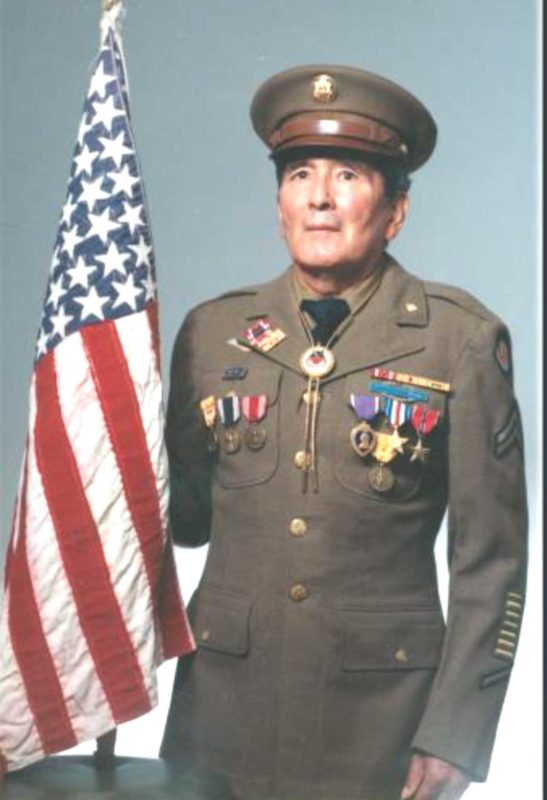U.S. flag made in a POW camp by Corregidor survivor given to Smithsonian

While struggling to survive in the camp he worked with a Canadian POW, who had lost both legs in the war, to fashion an American flag to symbolize his patriotism. Quintero hid it below the floorboard of his bed. BOOK COVER
A U.S. flag, made by an American survivor of Corregidor from scraps of jeans and colored blankets in a POW camp in Japan, was turned over on Sept 8 to the Smithsonian National Museum of American History in Washington, D.C., where it will become part of its collection of military artifacts.
Jose Quintero, a Texas-born son of Mexican immigrants, joined the U.S. Army and within a year, he found himself fighting the Japanese in the Philippines. Quintero’s actions on Corregidor earned him a Silver Star, among other honors.
After Corregidor’s surrender, Quintero survived a prisoner of war camp in the Philippines before being transported on a “hell ship” to the Niigata POW camp in Japan.
While struggling to survive in the camp he worked with a Canadian POW, who had lost both legs in the war, to fashion an American flag to symbolize his patriotism. Quintero hid it below the floorboard of his bed, according to an account in the Santa Fe New Mexican.
When the Japanese in the camp received word of their nation’s forthcoming surrender on Aug. 14, 1945, Quintero began running around the camp “like a madman” waving the handmade banner. He climbed to a roof upon hearing the sound of an approaching American airplane, and proudly held it in the wind.
The plane opened its bomb door, but then the pilot dipped his wings from right to left, acknowledging that he had spotted Quintero, which saved the unmarked camp from being bombed.
After the war, Quintero moved to New Mexico, having made so many friends among local soldiers who fought and survived the Bataan and Corregidor campaigns. He got a job as a hospital technician in a veterans’ hospital, where he met his wife, Gladys. The two married in 1952 and had four children. He retired from his job in 1978 and died at age 82 in 2000.
In the mid-1990s, Quintero gave the flag to the late Lt. Gen. Edward Baca, then the adjutant general of the New Mexico National Guard, who was speaking at a dinner honoring Bataan campaign veterans.
Baca carried the flag with him as he traveled to talk about New Mexico’s military history, Hispanics’ role in that history and Quintero’s flag. Baca gave one such talk at the Smithsonian in the mid-1990s and, according to his children, promised to give the flag to that museum once he died.
Baca died last year, and on Wednesday, his daughter Karen Nielsen, turned it over to the museum.

